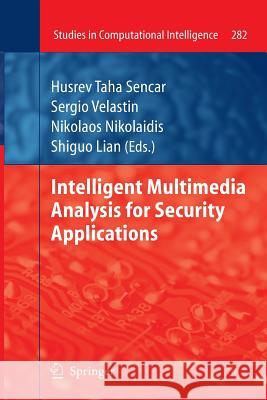Intelligent Multimedia Analysis for Security Applications » książka
Intelligent Multimedia Analysis for Security Applications
ISBN-13: 9783642263224 / Angielski / Miękka / 2012 / 404 str.
The advances in the generation and processing of multimedia data (e. g. documents, images, video, audio, animations, etc. ) have had an immense impact on multimedia applications and, as a result, multimedia has permeated almost every aspect of our daily lives. This development has also brought with it a whole host of issues and ch- lenges which were either not as apparent before or were non-existent. Today, digital media is relied upon as primary news and information resource, as evidence in a court of law, as part of medical records or as financial documents. However, there is still lack of authoritative mechanisms to verify the origin and veracity of media data. - deed, multimedia content has become an extremely valuable asset, and it is being both disseminated and consumed on a larger scale than ever before, but the issues conce- ing how the content owners and publishers should control the distribution of and - cess to their content have not been satisfactorily resolved yet. There are various other issues related to use of multimedia that require further analysis and research. For example, it is a known fact that some criminal organi- tions communicate with its members by posting information embedded media to p- lic forums and web-sites to evade surveillance by law enforcement. Conventional multimedia processing approaches do not provide sufficiently effective means for - fending against such communication.











